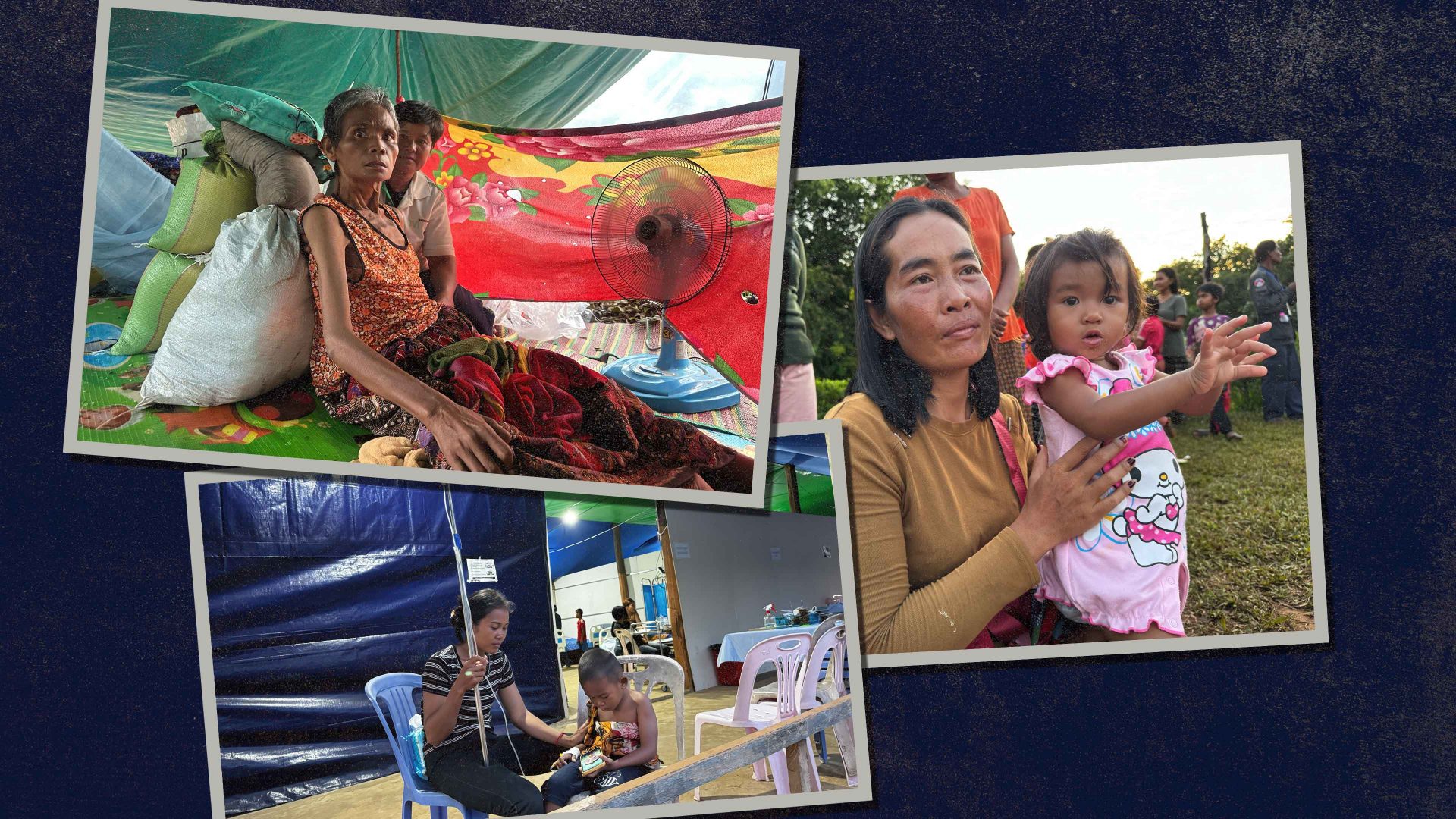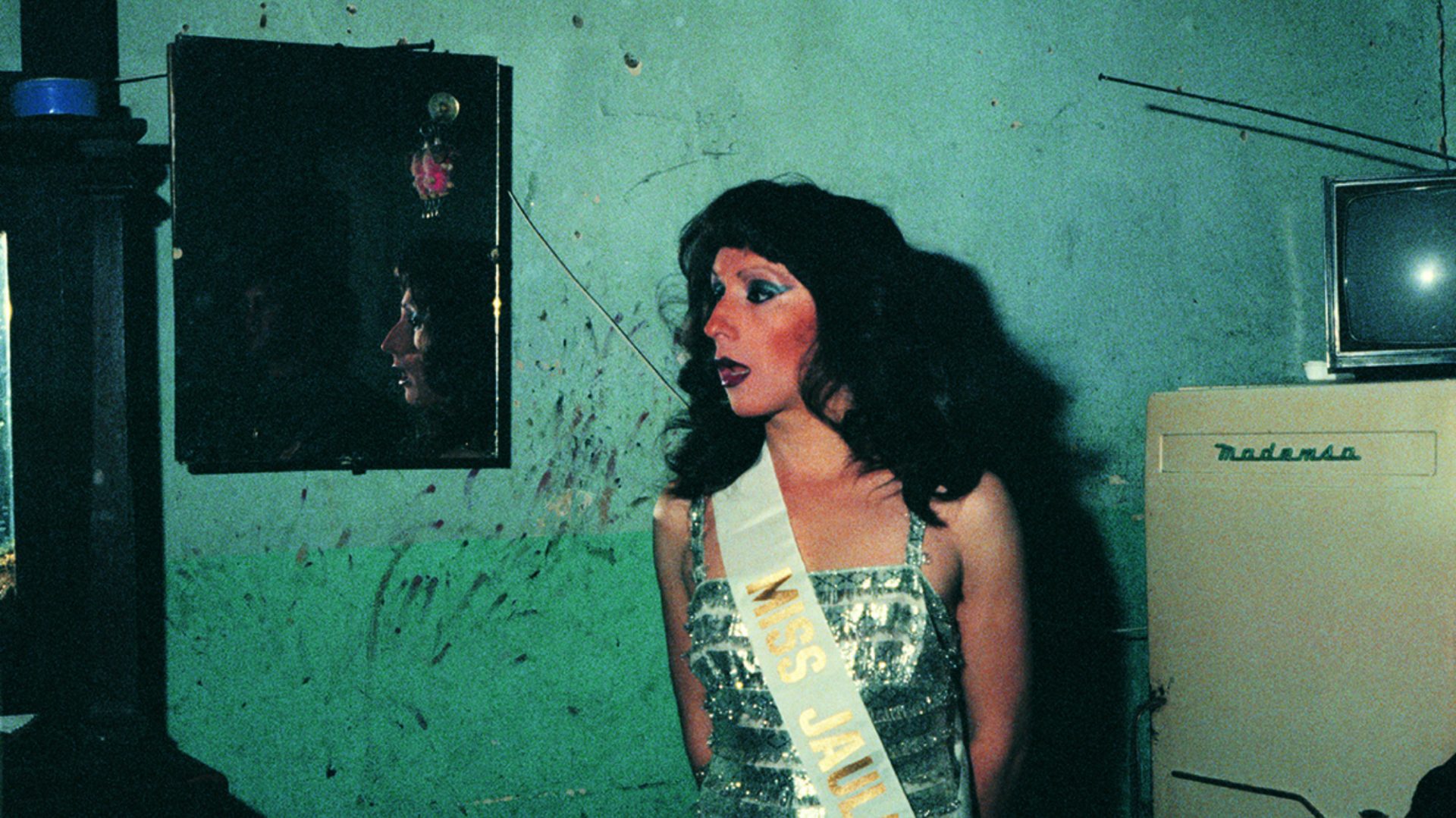Sim Srong’s house was hit by a Thai shell at around 9 am on 28 July. “My family has been working hard for almost 20 years to build it,” says the weary 40-year-old, gazing at the ruins. “It was devastated immediately.” Srong was unlucky enough to live near O Smach, a town in the far northeast of Cambodia close to the Thai border. The two governments disagree over where that border should lie.
The fighting began on July 24, and Srong, his wife and their two small children fled to their hometown in Prey Veng province under heavy Thai shelling. Later Srong received photos from a neighbour showing his house on fire. He called the fire brigade. But it was too late. Twenty years of hard work, gone.
The debris of Srong’s house is strewn across the ground, and it is hard to say what was part of the house and what was part of the shell that struck it. The house’s zinc roof has collapsed. All the furniture and beds have been turned to ash. The bomb smoke has left a strong chemical smell that gives me a headache. It is hard to breathe.
The recent clashes come after months of rising tension along the disputed border. The situation became serious in May, when troops exchanged fire, resulting in the death of a Cambodian soldier.
Diplomatic relations soured further when Cambodia’s former prime minister, Hun Sen, leaked a recording of a phone conversation with the Thai prime minister Paetongtarn Shinawatra. They had been discussing the border dispute, and the recording revealed that the Thai PM had criticised her own military. There was outrage in Thailand, leading to Paetongtarn’s suspension.
Then on July 23 five Thai soldiers were injured by landmines near Prasat Ta Muen Thom, prompting both countries to recall their ambassadors. The situation erupted into outright conflict on July 24, when Thai forces launched a large-scale offensive using F-16 fighter jets, artillery, and cluster munitions, which are banned under international law. The Cambodian ministry of defence reported at least eight civilians and five soldiers killed, with over 70 injured.
Tens of thousands of Cambodians living close to the border – including Srong – were evacuated, and most of them fled into Wat Bak Thkav, Chongkal District and Oddar Meanchey Province.

The pagoda of Prasat Ta Muan Thom is close to the Thai border, but away from the conflict zone. It has now become a temporary shelter for thousands of Cambodians.
“I was riding my motorcycle,” said Pich Sina, 37, carrying her one year old daughter. “I bowed my head because the shelling was coming up behind me. It came – boom, boom.” She took her other two children, aged 10 and 14, and drove to safety. Her husband had been at work at a Chinese-owned casino. He arrived later.
Phat Thom, a 57-year-old, chose to stay in his village. He watched as the bombs shattered the rooftops. “About 10 minutes after people left the village, a Thai shell hit the middle of the road,” he recalled. The road was completely torn apart. It was a close call. The Thai military, “launched a very heavy bombardment,” he said, “using drones and aircraft dropping all kinds of bombs. I want the war to end soon. It’s too miserable.”
There have been outbreaks of border violence before. In 2008 there was a heavy exchange of artillery fire around the temple of Preah Vihear, in Cambodia. Twenty people were killed. Everyone who remembers that brief conflict says this one was much worse.
In the Wat Bak Thkav camp, the rows of tents stretch out along the roadside. The hundreds of makeshift plastic shelters are lined up tightly side by side, each housing around five people. There are a lot of children, pregnant women and elderly people here, and with no fans or proper ventilation in these plastic tents, the heat is punishing. The camp offers safety, but it is nothing like home.
Phat Klork, 21 is in the camp with his ill mother. It is the second time he has had to run from gunfire; the first was during the fighting back in 2008. “I felt it was difficult because we didn’t bring anything with us, and my mother is sick. We don’t have a tent, and when it rains, we get wet. There’s no electricity or fans, and it gets very hot in the middle of the day.”
Klork dropped out of school and ended up working the night shift in a casino in O Smach. When the shooting started, he fled with nothing but the clothes he was wearing. His mother is partially paralyzed. “Her condition got worse when she arrived here. It’s the heat. She is having trouble breathing.”

Youn Soun, 70, is from Trapeang Ma Orm village near the Ta Moan military base, and her two sons, Soeun Seoung, 33, and Souen Chantha, 35, have been stationed on the front line since the conflict began.
“I’ve just been waiting for them. I’m scared and praying to my ancestors for their safety,” she says, her voice shaking. She says she was overwhelmed with relief when one of her sons finally called.
The authorities estimate that a total of 168,900 people have been displaced across five provinces in Cambodia, with around 300 evacuation centers now operational. The sanitation here in the Wat Bak Thkav camp is extremely poor. There are only five toilets available and twenty makeshift showers in plastic tents. The authorities have provided food and water, but not enough.

There are three medical aid stations set up within the grounds of the pagoda. According to doctors in the camp, nearly 24,000 women and children have received treatment since the shelling began. In crowded camps with bad sanitation and weakened, malnourished people, illnesses spread fast. Most of the children are showing symptoms of high fever and flu-like illness. Medical staff suspect dengue fever. There are also a lot of snakes around here.
The Cambodian and Thai governments eventually agreed to a ceasefire in meetings held at Kuala Lumpur on July 28, and evacuees told me that the sound of the shelling stopped toward the night of July 29. There was huge joy at the news, and people were desperate to return home to their crops and livestock. But there is also frustration – despite the truce, they have been told to stay in the camp until they receive official permission from the authorities to return home.
After seven days in the camp, Mouy Srey Yuey, 29, a mother of two, sits quietly at the camp’s health center, with her three-year-old son, who has a high fever. “He just got sick today,” she says. “His body temperature reached 39 degrees.” She says the hot weather and constant rain are making his condition worse. “We sleep in the tractor, and when it rains, we get wet,” she says. “Yesterday, the authorities gave us an extra tent,” she says. As she speaks, her eyes are filled with worry.
Sinorn Thang is a freelance writer based in Phnom Penh



